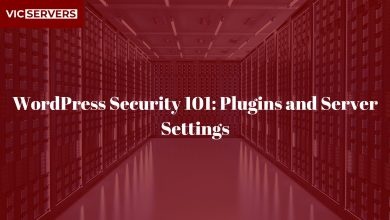Securing Your VPS with Fail2Ban

Securing Your VPS with Fail2Ban
When it comes to managing your own Virtual Private Server (VPS), security should be your top priority. Cyber threats like brute-force attacks, DDoS attempts, and unauthorized access happen every day — and your server might be a target without you even knowing it.
That’s why at Vicservers, we recommend using Fail2Ban, a lightweight but powerful tool that helps automatically detect and block malicious IP addresses attempting to abuse your server.
What is Fail2Ban?
Fail2Ban is an open-source intrusion prevention framework that scans log files for suspicious activity (e.g., too many failed login attempts) and bans the offending IPs by updating firewall rules.
Key Features:
- Detects brute-force attacks on SSH, FTP, Apache, etc.
- Automatically bans IPs for a specified period
- Logs and tracks attacker behavior
- Customizable filters and actions
Why You Need Fail2Ban on Your VPS
1. Protection from Brute-force Attacks
Automated bots can try thousands of login combinations on SSH in minutes. Fail2Ban blocks IPs after repeated failures, reducing your risk significantly.
2. Lightweight & Resource-Efficient
Unlike full firewall suites, Fail2Ban uses minimal CPU and memory, perfect for small to mid-sized VPSs.
3. Customizable Security Policies
You can define how many failures trigger a ban, how long the ban lasts, and even notify yourself when it happens.
How to Install Fail2Ban on Linux (Ubuntu/Debian)
Step 1: Update Your Server
sudo apt update && sudo apt upgrade -y
Step 2: Install Fail2Ban
sudo apt install fail2ban -y
Step 3: Enable and Start the Service
sudo systemctl enable fail2ban
sudo systemctl start fail2ban
Basic Configuration
Fail2Ban’s default config is found in /etc/fail2ban/jail.conf. But never edit it directly. Instead, create a copy:
sudo cp /etc/fail2ban/jail.conf /etc/fail2ban/jail.local
Open the new config:
sudo nano /etc/fail2ban/jail.local
Example SSH Protection:
[sshd]
enabled = true
port = ssh
logpath = %(sshd_log)s
maxretry = 5
bantime = 3600
findtime = 600
- maxretry – Number of attempts before banning
- bantime – How long to ban in seconds (3600 = 1 hour)
- findtime – Time window to monitor failures
Monitoring Fail2Ban
Check status:
sudo fail2ban-client status
Check specific jail (e.g., SSH):
sudo fail2ban-client status sshd
Unban an IP manually:
sudo fail2ban-client set sshd unbanip 192.168.1.100
Protecting More Than Just SSH
Fail2Ban supports other services too:
| Service | Jail Name | Log File Example |
|---|---|---|
| Apache | apache-auth | /var/log/apache2/error.log |
| Nginx | nginx-http-auth | /var/log/nginx/error.log |
| Postfix | postfix | /var/log/mail.log |
| Dovecot | dovecot | /var/log/mail.log |
Enable them in your jail.local by uncommenting the relevant blocks.
Email Alerts
To receive an email when an IP is banned:
- Install mail utility:
sudo apt install mailutils
- Edit jail.local:
destemail = your@email.com
sender = fail2ban@yourserver.com
action = %(action_mwl)s
This will send logs and whois information about the attacker.
Best Practices by Vicservers
- Use SSH keys instead of passwords
- Change the default SSH port
- Pair Fail2Ban with UFW or iptables
- Regularly check your logs and ban list
- Keep Fail2Ban up to date
Conclusion
Fail2Ban is one of the simplest yet most effective ways to harden your Linux VPS against common attacks. In just a few minutes, you can dramatically reduce your server’s exposure to automated threats.
At Vicservers, we deploy Fail2Ban on all managed VPS and dedicated servers by default. Whether you’re hosting a website, app, or database — security is never optional.
Need Help?
Let Vicservers handle your server security while you focus on growing your business.
🌐 Visit us at www.vicservers.com
📧 Email: support@vicservers.com
By Vicservers | Expert Linux Hosting & Server Security



